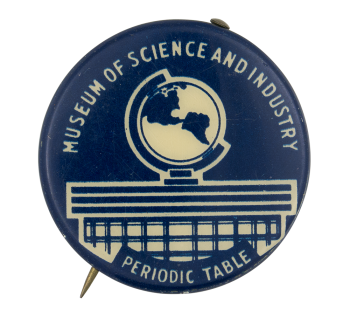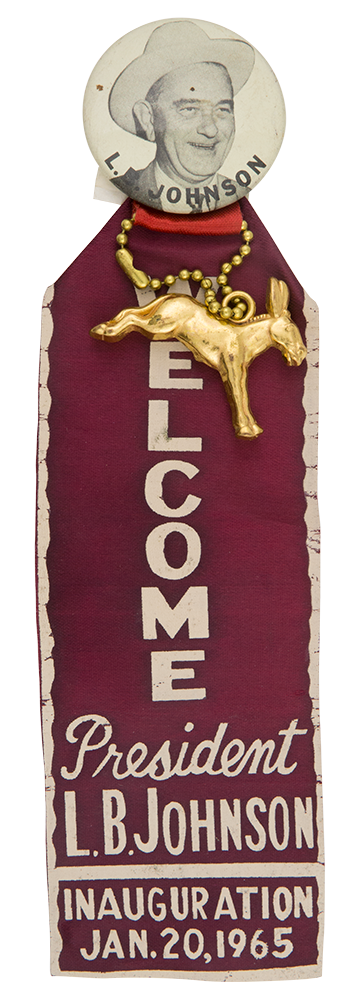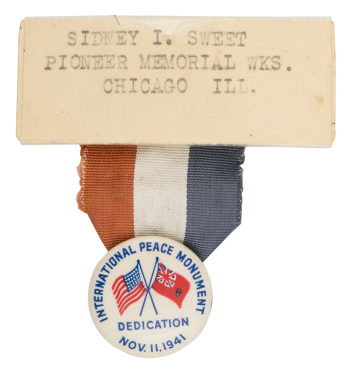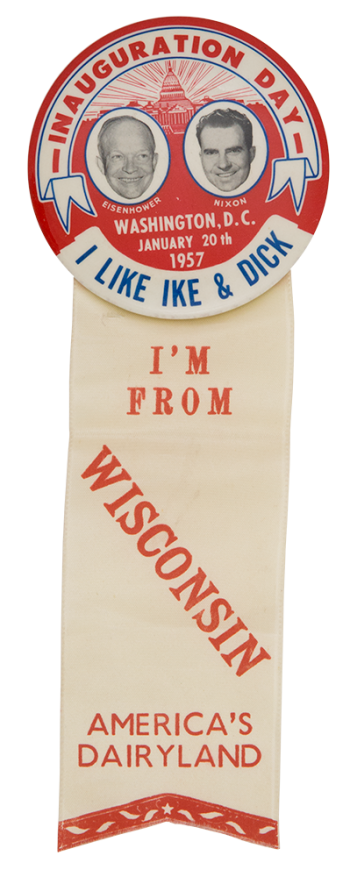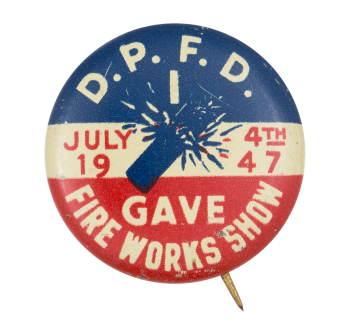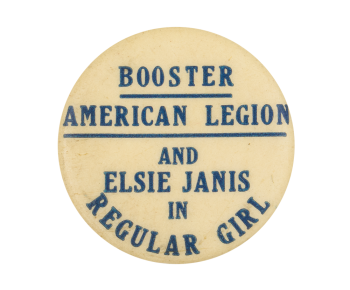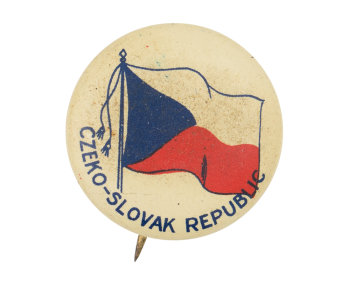Museum of Science and Industry
| Category | |
|---|---|
| Additional Images | |
| Sub Categories | |
| Text on Button | Museum of Science and Industry Periodic Table |
| Image Description | White text on blue background, with illustration of the globe and periodic table of the elements displayed at the Museum of Science and Industry. |
| Back Style | |
| The Shape | |
| The Size | |
| Additional Information | One of the exhibits in Chicago's Museum of Science and Industry's Regenstein Hall of Chemistry is an enormous (30' x 5') Periodic Table of the Elements. Examples of many of the elements are displayed along with a list of their uses, and visitors may push a button to hear Tom Lehrer's 1959 song "The Elements" while they explore the exhibit. The Museum of Science and Industry was established with the help of Sears, Roebuck and Company president Julius Rosenwald to convert the Palace of Fine Arts in 1926. The first opening ceremony of the museum was during the Century of Progress International Exposition, a World's Fair held in 1933, with a theme of "technological innovation". |
| Catalog ID | EV0246 |

